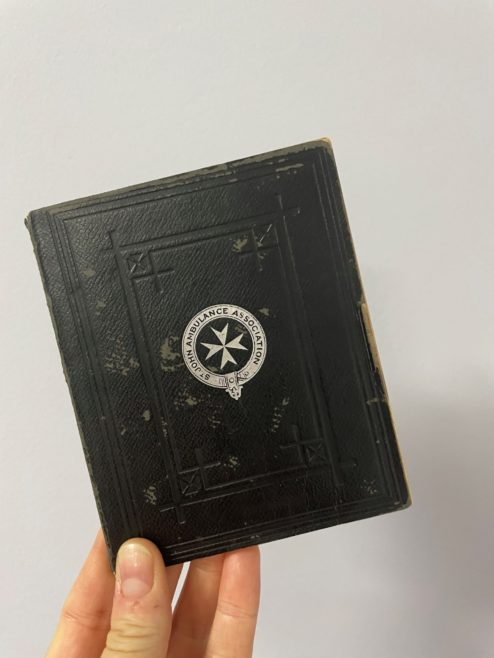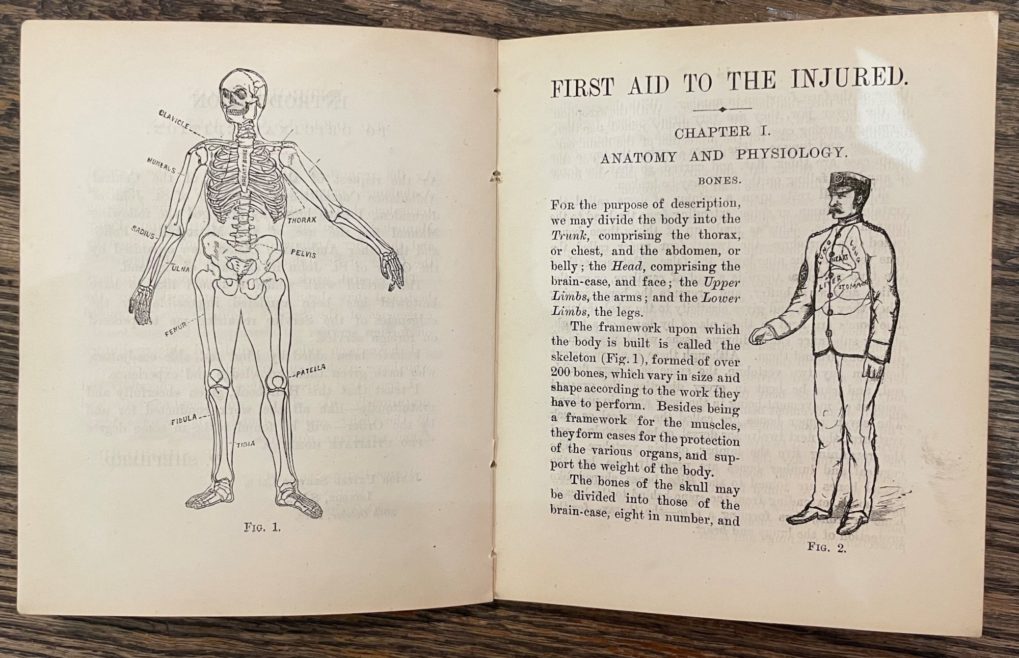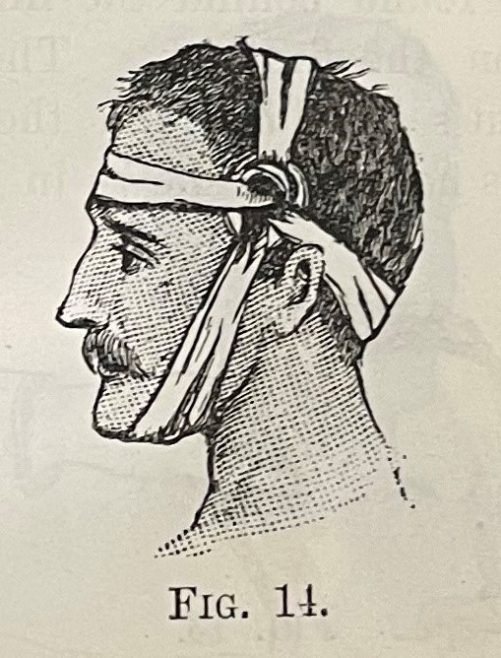This week is Explore Your Archive week, an annual celebration of all things archive-y, organised by the Archives & Records Association (UK & Ireland) to encourage everyone to visit, use, celebrate, and be inspired by archives across the UK & Ireland. On today’s theme of #EYAArt, let’s explore the illustrative work in one of St John Ambulance’s early publications: First Aid to the Injured.
The St John Ambulance Association was founded in 1877 to provide practical first aid training, and it opened training centres across the length and breadth of the country. The Association’s training lectures on ‘First Aid to the Injured’ were developed into its first aid manuals, first published in 1878. The manuals were initially titled ‘Handbook Describing Aids for Cases of Injuries or Sudden Illness’, but moved to adopt the same title as the Association’s key training lectures in 1885, becoming known as ‘First Aid to the Injured’.
The manuals were one of the first pocket-sized practical guides for dealing with first aid scenarios and life-threatening injuries, designed for quick and easy access, and including detailed accompanying illustrations. They are small and slim, measuring 111mm x 140mm when closed, and 220mm x 140mm when open. They have an average of 203 pages, and most copies have a fold-out illustration of the human anatomy tucked neatly into the front cover.

First Aid to the Injured was intended for non-professionals, to ‘enable any one to act in cases of injury or sudden illness, pending the arrival of professional help’, and was initially created for use by the Association during their first aid classes for the public and for use by the Metropolitan Police. Within eight months, 20,000 copies were sold, demonstrating the real appetite for access to lifesaving skills and information. They are a unique record of the Associations developing training and guidance in the decades before Health & Safety legislation and the National Health Service.

They are also home to detailed illustrative examples of bandaging, first aid treatments, and methods of resuscitation, which we’re sharing today. Although you might not see these illustrations hanging up in an art gallery, they are certainly worthy of some admiration for their artistry.



Please note that these are historical illustrations and should therefore not be considered as current recommended methods of first aid.







